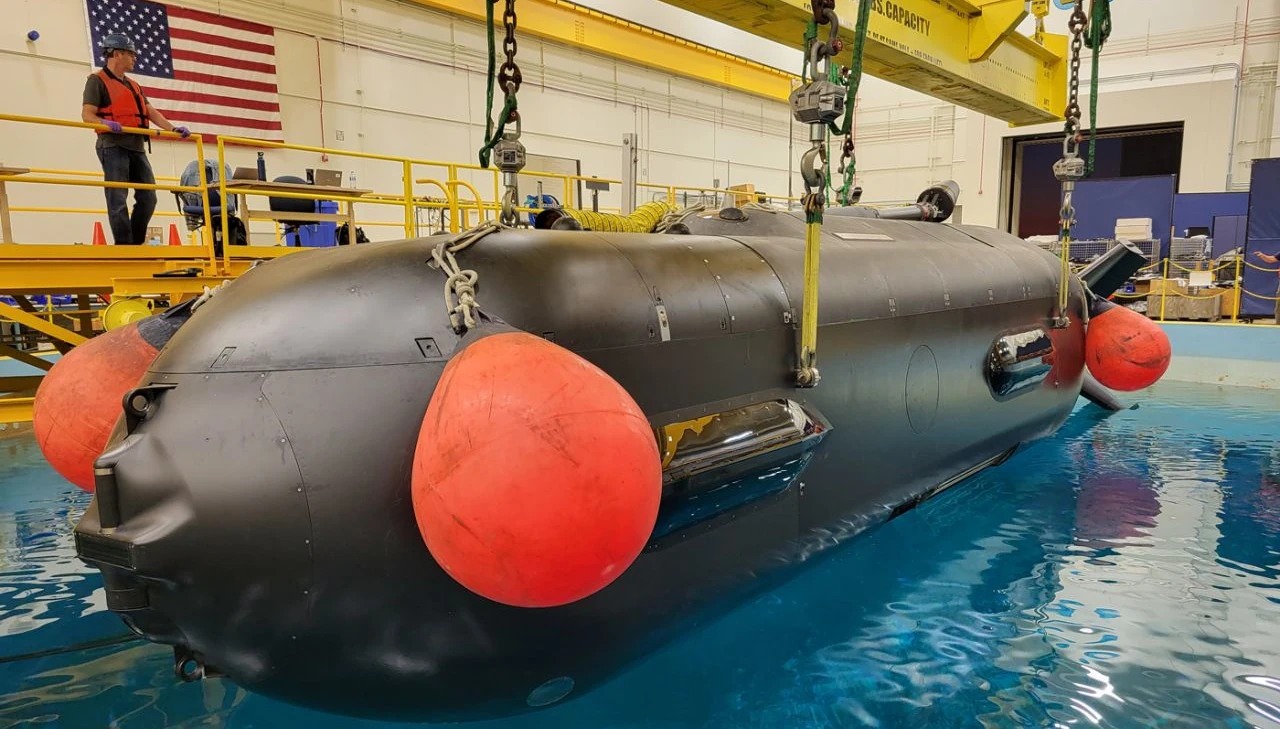The United States Navy (USN) wants its unmanned underwater vehicles (UUVs) to lay mines that can fire torpedoes. The latest Congressional Research Service (CRS) report on the USN’s Large Unmanned Surface Vessels (LUSV) and Undersea Vehicles made this claim.
The USN’s UUV and Unmanned Surface Vessel (USV) are being tested in various roles and maneuvers, in line with a broader vision to have drone boats take the load off larger surface combatants.
The aim is to have a more extensive fleet to spread out and hit China inside its Anti-Access/Area-Denial (A2/AD) bubble.
Without naming the country, the CRS frames this possible stage as the XLUUV to be used from “forward operating ports.” The CRS report also comes after US defense major Boeing handed over the ‘Orca’ Extra-Large Unmanned Underwater Vehicle (XLUUV) to the US Navy in December.
The USN is slated to receive five to six more XLUUV prototypes over the next few years. The autonomous submarine can perform long-duration critical missions to achieve undersea maritime dominance in changing environments and contested waters.
Vision For Surface & Underwater Unmanned Vessels
The CRS report, reflecting the doctrinal and tactical thinking behind the USV and UUV programs, also validates previous EurAsian Times reports on the subject. Those noted how the US Navy hopes to delegate more routine tasks to unmanned vessels to unburden the larger capital warships and destroyers.

“The Navy wants to develop and acquire LUSVs, MUSVs, and XLUUVs as part of an effort to shift the Navy to a more distributed fleet architecture, meaning a mix of ships that spreads the Navy’s capabilities over an increased number of platforms and avoids concentrating a large portion of the fleet’s overall capability into a relatively small number of high-value ships (i.e., a mix of ships that avoids ‘putting too many eggs into one basket’),” the report said.
It is hoped to bring about a situation where standard roles like anti-submarine warfare, detecting mines, or scanning for other surface and aerial drones can be undertaken by the UUVs and USVs. Depending upon the unmanned boats’ configuration, they can either engage the targets themselves or pass on the information to the large destroyers or frigates.
XLUUV Should Lay Torpedo-Firing Mines
“Roughly the size of a subway car,” the USN expects the XLUUVs, among other things, to be able to deploy the Hammerhead mine covertly. The “planned mine would be tethered to the seabed and armed with an anti-submarine torpedo, broadly similar to the Navy’s Cold War-era CAPTOR (encapsulated torpedo) mine,” states the USN’s budget document filed before the Congress.
This Hammerhead payload would be the “next payload” for integration with the Orca XLUUV, meaning future Orca units will have the module. According to the CRS document that describes how the Navy expects it to be compatible with various systems, the Orca is currently in a testing and technology development phase.
For instance, the XLUUV will have a “modular payload bay, with defined interfaces” that must accept current and future payloads. These “future payloads” could be “advanced energy solutions and enhanced autonomy and command and control.”
Enter The Hammerhead Mine
The USN’s Hammerhead program itself expects a radical capability from defense contractors. The mine should be capable of being placed covertly on the sea bed by a “robot submarine.” The Hammerhead fires the homing torpedo when its sensors detect a target.
According to a Forbes report from October 2020, the Hammerhead procurement is being fast-tracked under a Navy Maritime Accelerated Acquisition initiative and an Acquisition Rapid Prototyping Program.
The mine is needed urgently because it forms a vital part of the National Defense Strategy for “peer naval competition.” The specific challenge is to “counter submarines on their home turf in the South China Sea.” The only adversary submarines in the SCS are Chinese.
Hammerhead is an ‘encapsulated mine’ that fires Mark (Mk.) 54 torpedo. The Hammerhead has various modules, including a ‘Command, Control, Signal Processing and Decision-Making module’, which will presumably decide to fire at a specific target.
The other is a communications module, which can communicate with nearby submarines, sensors, and possibly other Hammerheads. This will make it possible to activate or deactivate Hammerhead after it has been put in position.
“While such mines could be delivered by manned submarines, these are scarce and expensive assets. The focus is on providing them with a new generation of large, long-range Unmanned Underwater Vehicles (UUV), particularly the Orca Extra Large UUVs.”
Will Orca XLUUV Be Used In The Western Pacific?
Since the XLUUV would be “too large to be launched from a manned navy submarine, it will instead be transported to a forward operating port and then launched from a pier.” This means if planned to be used in the western Pacific, it must be transported to either US-friendly ports in Japan or South Korea, from where it will be released into the water.
The USN does envision some plans for employing the Orca XLUUV in potential flashpoints like the western Pacific. “In parallel, the Navy is working through the process to establish future far-forward basing locations. The Navy will establish in-theater forward operational capability following successful government testing, training, and work-ups at the Naval Base Ventura County site,” the CRS report added. In other words, the Orca’s future in a war with China is uncertain.
The Naval Base Ventura County is undergoing “concurrent facility upgradation” for “testing, training, and work-ups” of the XLUUV. This means the experience in building the infrastructure for handling the Orca will also inform the development of such facilities in the future, especially in the “forward” locations in Japan or South Korea.
- The author can be reached at satamp@gmail.com
- Follow EurAsian Times on Google News




